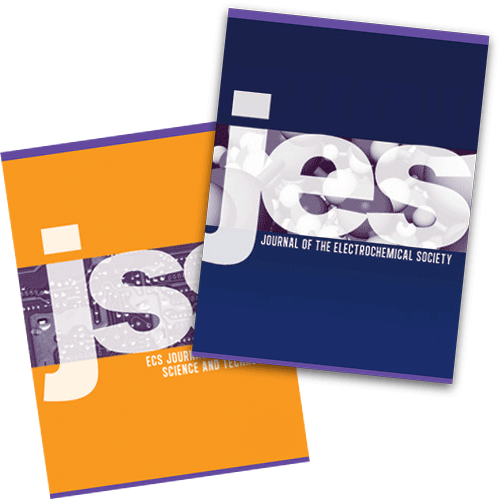 This article was originally published in the winter 2017 issue of Interface.
This article was originally published in the winter 2017 issue of Interface.
Tech Highlights was prepared by David Enos and Mike Kelly of Sandia National Laboratories, Colm Glynn and David McNulty of University College Cork, Ireland, Zenghe Liu of Verily Life Science, and Donald Pile of Rolled-Ribbon Battery Company. Each article highlighted here is available free online.
Mechanical Pre-Lithiation of Silicon Anodes for Lithium Ion Batteries
Low Initial Coulombic Efficiency (ICE) continues to be a significant issue for the practical use of alloying materials, such as Si and Ge, as anodes and particularly for their implementation in full Li-ion cells. It is imperative to develop methods to improve ICE to mitigate issues associated with the consumption of electrolyte and the loss of Li during initial cycling. Several methods
to improve ICE have been examined, including studying the effects of active material particle size and the use of various electrolyte additives such as vinylene carbonate. The prelithiation of anode materials has also been investigated using two different approaches—electrochemical and mechanical prelithiation. Researchers from the University of Tottori have reported on the formation of a crystalline Li-Si alloy phase via a mechanical alloying (MA) method. Read the full article.
From: Y. Domi, H. Usui, et al., J. Electrochem. Soc., 164, A1651 (2017).
Detection and analysis of microRNAs have recently been of great interest due to their association with cancer and other diseases. Among the key challenges in developing analytical methods for a microRNA assay is their low concentration. Researchers from Ningbo University in China just reported an ultrasensitive electrochemiluminescence (ECL) microRNA-21 sensor, termed as a Faraday cage-type ECL, that pushed the detection limit down to 0.3 fM. Read the full article.
From: J. Lu, L. Wu, Y. Hu, et al., J. Electrochem. Soc., 164, B421 (2017).
An Optimized Trivalent Chromium Conversion Coating Process for AA2024-T351 Alloy
Chromate conversion coatings have been the industry standard for the corrosion protection of aluminum alloys for decades. However, recent regulations are significantly reducing their commercial availability due to the toxicity and carcinogenic nature of hexavalent chromium. Trivalent chromium conversion (TCC) coating processes are an alternative technology being pursued as a viable alternative to chromate, and a number of TCC coatings are now commercially available. A particularly challenging application for TCC coatings are highstrength, Cu-bearing alloys, such as AA2024. The Cu-rich particles that strengthen these materials are electrochemically active, and promote the formation of defects in applied TCC coatings, reducing their efficacy. In this paper, a specialized acidic deoxidizing treatment to remove surface-incident Cubearing precipitates combined with a warm water post-treatment was explored. Read the full article.
From: J. Qi, L. Gao, Y. Li, et al., J. Electrochem. Soc., 164, C390 (2017).
Transfer Printing of Micron-Size Graphene for Photonic Integrated Circuits and Devices
The growth of high-quality films is important for the increased utilization of graphene in a large variety of possible applications, particularly those involving photonics. Growth techniques such as chemical vapour deposition (CVD) can be used to form these high quality films; however, this direct growth technique is not compatible with many substrates on which integrated photonic devices are typically, built where site selectivity for the graphene is of high importance. There is a drive for improved high-throughput, cost-effective and scalable methods for the site-specific transfer of pre-grown graphene films. Currently, home-built transfer tools are used, which rely on the handling skills of an operator for effective use. A method for the transfer printing of CVD-grown micronsized graphene from one substrate to another using a commercially available automated tool has been developed by a group based in Ghent University, Belgium. Read the full article.
From: L. A. Shiramin, A. Bazin, S. Verstuyft, et al., ECS J. Solid State Sci. Technol., 6, P435 (2017).
A Portable Device for Personal Health Care
Portable medical devices for personal health care, home care, and mobile diagnoses by medical professionals complement benchtop point-of-care instruments used in hospitals, urgent care centers, and other medical facilities. Researchers at National Cheng Kung University and National Tsing Hua University in Taiwan recently reported the design, development, fabrication, and prototyping of a transistor-based device for measurement of the C-reactive protein (CRP). Read the full article.
From: P.-C. Chen, Y.-W. Chen, I. Sarangadharan, et al., ECS J. Solid State Sci. Technol., 6, Q71 (2017).


